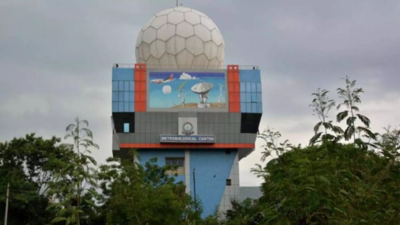- News
- India News
- India’s weather forecasting to face long-term impact of US move to downsize NOAA
Trending
India’s weather forecasting to face long-term impact of US move to downsize NOAA
The India Meteorological Department (IMD) is concerned about potential impacts on weather forecasting accuracy due to the Trump administration's plan to cut funding for NOAA. NOAA shares crucial data, especially ocean observations from the Indian and Pacific Oceans, which aids IMD in weather forecasting, disaster preparedness, and monsoon predictions.
NEW DELHI: India Meteorological Department’s (IMD) concerns intensified with the American Meteorological Society (AMS) releasing a formal statement late Thursday, highlighting the Trump administration’s plan to eliminate the National Oceanic and Atmospheric Administration (NOAA) research through fund cuts that will result in the closure of all its weather, climate, and ocean laboratories, as well as cooperative institutes.
The NOAA presently shares data with several countries, including India, which helps improve weather forecast accuracy. Although the US govt’s proposed move may not immediately impact India, it will affect the IMD’s forecasting skill in the long run.
NOAA significantly contributes to the observing system in oceans, including the Indian and Pacific Oceans, which helps IMD in weather forecasting, disaster preparedness and climatic research.
Both NOAA and India’s ministry of earth sciences (MoES) have a joint oceanographic data portal, launched in 2021. The collaboration under partnership agreement between the two agencies also helps in studying the Indian Ocean’s role in monsoon and improving monsoon forecasts.
“If there is a cut in manpower, we do not have any problem. There is no problem even if the model is not there. The only thing is that they are significantly contributing to the observing system, especially in the ocean, be it the Indian Ocean or the Pacific Ocean. If that is reduced, our forecasting skill will be reduced,” he said.
Noting that the clue for monsoon forecasts comes from the ocean, the secretary said, “If we do not have proper ocean observations, we will definitely not be able to have better predictability”.
The AMS statement came in partnership with the National Weather Association of the US that connects approximately 1,300 members from the fields of meteorology, hydrology, emergency management and academia.

About the Author
Vishwa MohanEnd of Article
Follow Us On Social Media








